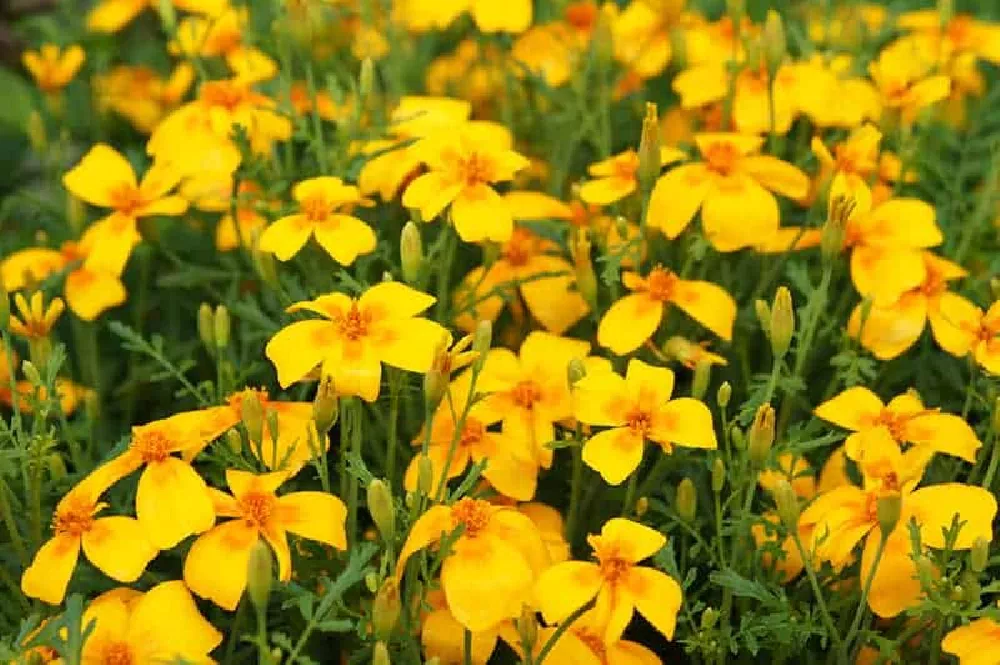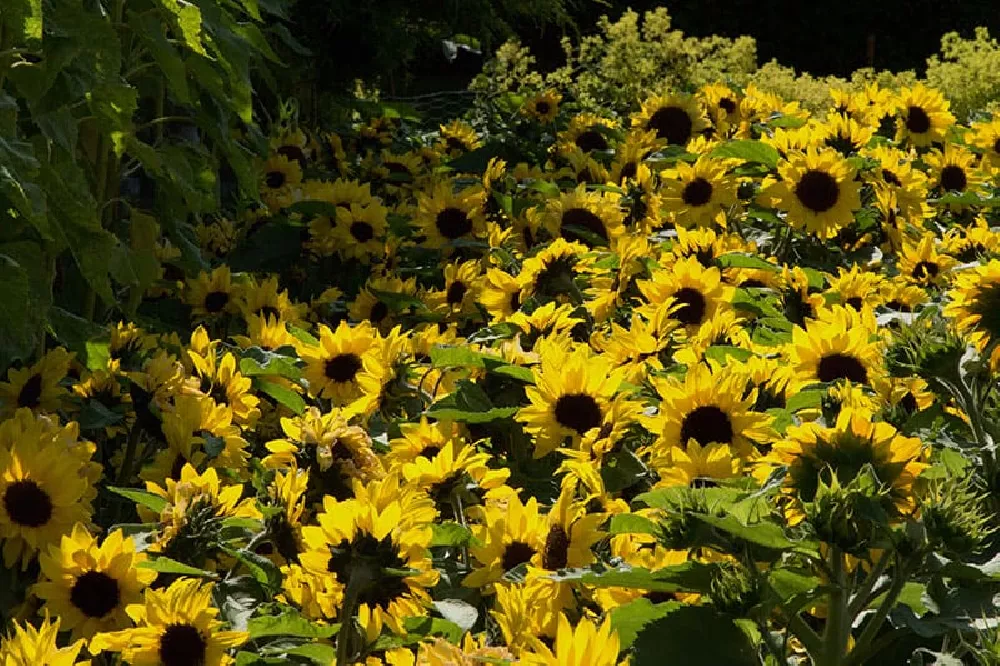Marigolds are among the most popular flowers you can plant in your garden, and they are easy to grow and care for. Depending on which variety you choose, the familiar red, orange, and yellow blooms will continue from late spring till the end of the fall season. They can be sown from seed or purchased at a garden center as a live plant. Marigolds also help protect other plants from harmful bugs, and their dried petals can benefit neighboring plants when incorporated in the soil. Here are some other notable facts about marigolds:
- Annuals that need to be planted each year.
- Come in a range of sizes, from the French dwarf varieties to the taller African marigolds whose blooms can grow to six inches across.
- Heat- and drought-resistant as well as disease- and pest-resistant.
Planting and Care
Planting instructions
The easiest way to plant marigolds is from live specimens purchased from a local garden center. Many people consider growing them from seed more fun and rewarding, and because doing so is easy, they are often used for teaching children about how seeds grow into flowers.
You can sow marigold seeds directly into your garden by starting with moist soil and placing seeds about one inch apart and one inch deep. Seedlings can be thinned to about eight to 10 inches apart once they emerge. Plants grown in containers also need space to grow. Marigolds do best in fertile, well-drained soil, and are prone to powdery mildew if planted in shade or areas that are too wet. Take care not to plant until the weather is consistently warm as they are sensitive to frost.
Watering and nutrients
A marigold flower will thrive in a sunny spot with very little care. When planted in direct sun in a hot climate, it will only need watering if it has gone two weeks or so without rain. Plants in containers generally lose water quickly and will need to be watered daily. When watering, take care not to water onto the leaves but onto the soil at the plants base. This will help prevent powdery mildew.
Marigolds have no need of fertilizer beyond what they get from the soil and providing it can lead to an abundance of greenery with very few flowers.
Propagation
Marigolds are easily grown from seeds but can also be propagated from cuttings. To grow a marigold flower from a cutting, fill a container with a combination of sand, peat, and perlite in equal amounts. Moisten this mixture and insert a chopstick or pencil to create a hole about two inches deep. Fill a small cup with about an inch of rooting hormone.
Using sharp scissors cut an immature stem from your plant, preferably one that has not yet flowered. Remove the lower leaves, but leave the top ones, then dip the cut edge into the rooting hormone and place the stem into the hole in the planting medium, pressing the soil around the stem. Keep the plant moist by placing a plastic bag over the container and fastening it at the bottom, then place the container in a warm area with indirect sunlight.
Check your cutting every few days, opening the bag and keeping the soil moist before refastening the bottom of the plastic bag. In a few weeks, roots will form and the cuttings will be ready to be transferred into a container with well-drained potting soil. Once the new plant is flourishing it is ready to be planted in a sunny spot in the garden.
When you harvest your own marigold seeds from existing plants simply remove the dried flower heads from the stem, removing any petals or leaves. At its base you will see the seeds, which are light-colored with darkened ends. Pull the seeds from the base and allow them to air dry on a paper towel for a week. Keep them in a cool, dry, dark place until you are ready to sow them, usually about two months before last frost when sowing them indoors. When sowing directly into your garden wait until after fear of frost has passed.
Pruning
Though marigold flowers do not need any attention, taking a few minutes to “deadhead” them every few days will yield more flowers. Deadheading refers to pulling off faded or dead flowers. If these are left on the plant, energy will be expended into developing seeds. By removing the spent flowers, the plant will instead direct its energy into producing more flowers, ensuring that you have plenty of vibrant color all season long.
Pests and diseases
Marigolds are resistant to most of the problems that afflict other plants, but they are still vulnerable to spider mites and aphids. These two pests can easily be addressed with a blast from a hose or insecticidal soap. Overwatering or too much shade can lead to powdery mildew, a white fungus that appears on the top of the marigold’s leaves and can stunt the plant’s growth. To prevent powdery mildew, plant your marigolds in a sunny spot to help keep the foliage dry. A spray-on fungicide or a solution of one teaspoon baking soda mixed with a quart of water will kill the fungus.
Light
Marigolds fare best in full sun. They are well-equipped to cope with very hot temperatures and can thrive in full sun all day long. It is only in the most extreme heat that marigolds will show any signs of struggling. If you do plant your marigolds in partial shade, they will adapt to this environment, but they will never bloom as profusely as those grown in full sun. Marigolds growing in shade are also prone to fungal diseases and rot.
If you are growing your marigolds in a container, you have the benefit of portability, so on very hot afternoons, you could move the container to a shaded position to give the plant some relief. This isn’t essential, and your plants will cope just fine in full sun, but some gardeners believe it helps to keep their marigolds in their best condition during especially hot weather.
Temperature
Marigolds are hardy throughout all of the USDA zones, making them an accessible, easy-maintenance plant that can be grown almost anywhere. They will flower in warm temperatures, typically from spring right through until the first frost in October or November. They cope exceptionally well in high heat but will appreciate some shade if possible in these conditions.
Marigold Flower Varieties
There are over 40 species of marigold in existence that we know of, but most of those found in gardens come from just four main types.
American marigolds – Tagetes erecta

French marigolds – Tagetes patula

Signet marigolds – Tagetes tenuifolia

English marigold – Calendula officinalis

FAQs
Are marigolds edible?
Marigolds do not add a significant amount of flavor to food, but the petals of some varieties are edible. While some have a citrus flavor, and others impart a mild spice, they are mostly used for the color they add. Interestingly, many chicken farmers add marigold petals to their chickens’ feed to enhance the golden color of their egg yolks.
How do marigolds enhance the health of other plants in the garden?
Marigolds are frequently planted as “companion” plants because they effectively deter the pests that can decimate other plants. The scent of marigold flowers keeps beetles, leafhoppers, and nematodes away, and even deters bunnies from nibbling on vegetables. As an added plus, once marigolds are planted their impact lasts, as the roots emit a chemical that persists and keeps pests away for years.










